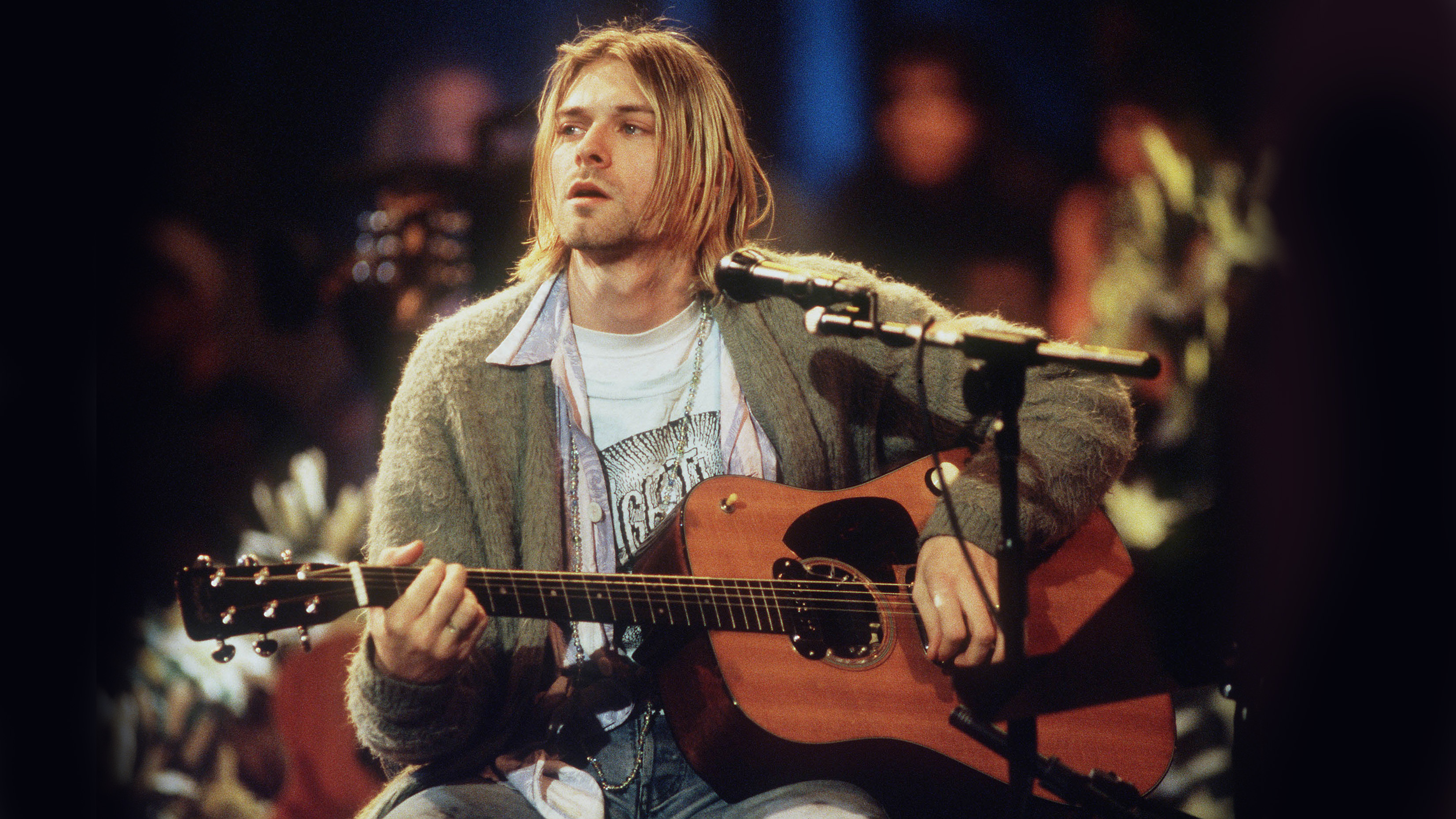
About a Girl is one of Nirvana’s most beloved songs, a beautiful Beatles-recalling hymn to a fading relationship that stands in stark contrast to the muddy, nihilistic sonics found elsewhere on their 1989 debut, Bleach.
But when analysed further, the theory behind the song – which would become the opening track at the iconic MTV Unplugged show in 1994 – underlines Cobain’s gift for writing effective chord sequences instinctually.
On a Reddit thread in the r/musictheory SubReddit, user ’Nun-Much’ asked why the song – which orients its verse pattern around a rolling Em and G sequence – seems to imply an Em key, when the following ‘chorus’ section rolls through the chords C#, F#7, E5, A and C, which deviates from the chords that correspond with Em.
“How comes this sounds good? Like what’s the theory behind this that makes it sounds so good and unique? Is this a common phenomenon used in music? I really aim to understand this type of stuff so I can make unique progressions myself.” ‘Nun-Much’ asks.
Help is at hand, as other Reddit users pick apart both Cobain’s songwriting approach, and the psychological impact, that makes the song work. “C# and F# are part of E major, the chords droning back in forth in a heavy E minor pattern and then jumping directly a tritone root movement to a chord from the parallel major key has a kind of jarring sound but the relationship is not that distant so you still hear the context of the original,” points out user ‘Tangible_Slate’.
But, on the larger point of key-jumping being a fixed rule, LukeSniper opines: “Everything being diatonic is not some sort of requirement or restriction on things sounding good. Here we might just say that we've switched to C#. It's the three most basic chords in C#. The melody follows such a key change. Then we go back to E minor (but Kurt sings a G# over the E minor chord, because why not?) We're just describing what's happening. We wouldn't say ‘this sounds good because that's what it is.’ That's not really what music theory is.”
He goes on to say that, “The change to that C# is abrupt, but... that's kind of the point. It's surprising. That can be exciting and interesting. It ‘works’ because Kurt was a good songwriter and did it with confidence and conviction. Honestly, you can make pretty much anything ‘work’ if you do it with some conviction. Something super unusual might sound cool simply because it's unusual. I assure you that Kurt Cobain wasn't sitting there thinking "How do I use music theory to make this strange thing work?"

A further user response highlights the casual relationship we have with music theory by cultural osmosis, which may have underpinned Kurt’s thought process when writing the song. Reddit user Jongtr states: “If you regard classical music (and classical theory) as ‘proper grammar’, then rock music is a kind of ‘musical slang’. It's not so much ‘breaking rules’, as ignoring some rules (the irrelevant ones) and making up its own. Kurt Cobain, like all rock musicians, grew up around music using that language, so naturally he ‘spoke’ that language himself. Of course, he settled on one or two personal quirks here and there - his own ‘voice’ - but in terms of chord choice and chord sequence it's all pretty much standard.”
Originally written in 1988, and recorded as part of the six-day session that spawned in their abrasive debut, Bleach, About a Girl endures as the diamond in the rough – a glimmer of vulnerability amidst its chaotic album-mates, such as School, Blew and Love Buzz. The title stems from when Cobain was asked originally what the song was about in the studio; “It’s about a girl’ he replied.
Read and and engage with the discussion over on Reddit







